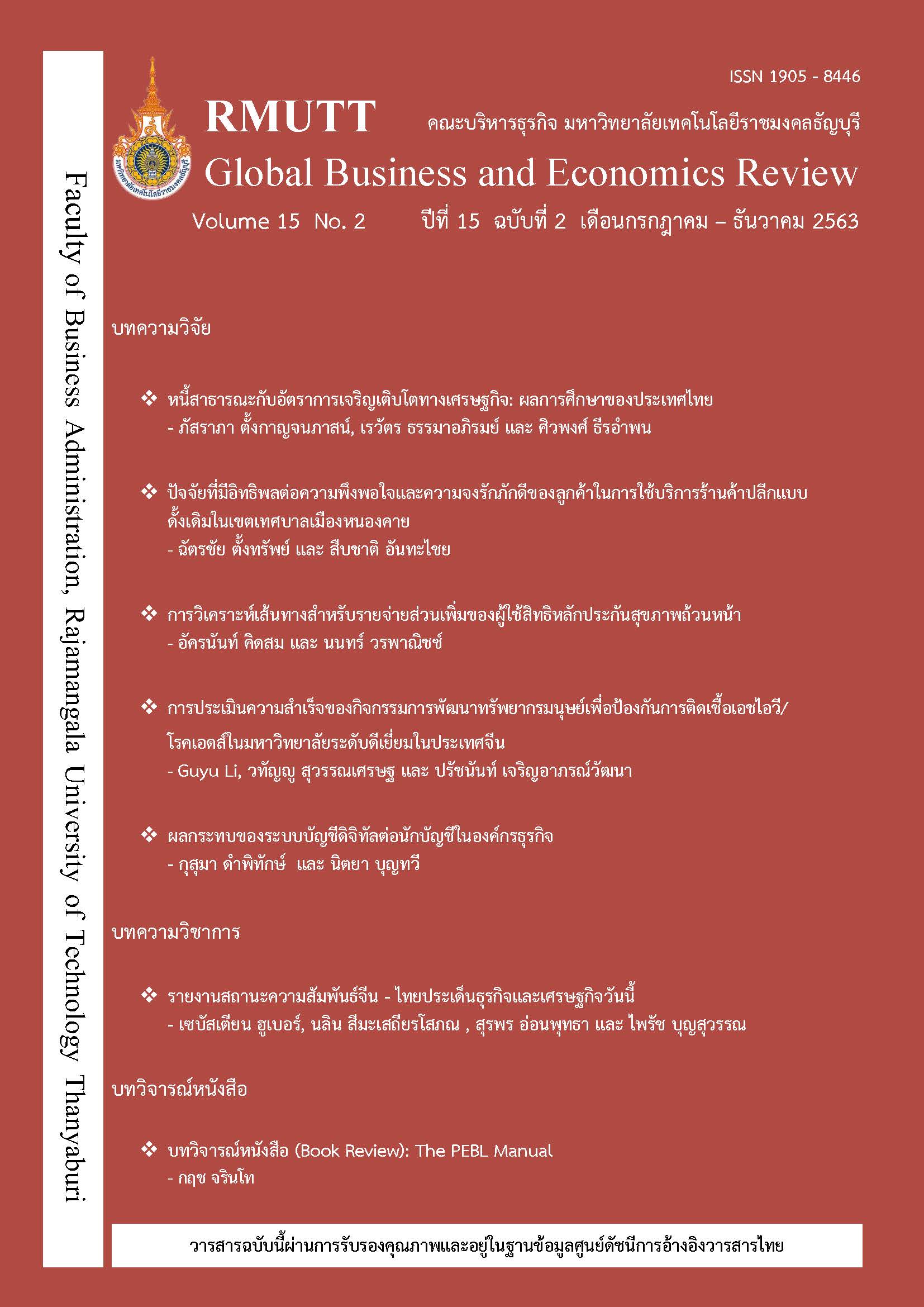ORGANIZATIONAL DEVELOPMENT: THE POLICY AND IMPLEMENTATION METHODS OF HIV/AIDS EDUCATION IN ONE AWARDED CHINESE NORMAL UNIVERSITY
Keywords:
Human Resource Development, Chinese Normal University, HIV/AIDS EducationAbstract
The work of Human Resource Development (HRD) and Organizational Development in most organizations aims at helping organizations to improve their performance and achieve the desired goals. Universities are one of the organizations which need long term development. Since Yunnan Normal University has received an award for HIV/AIDS prevention, exploring their policy and implementation methods of HIV/AIDS education allows other universities to take the organizational development guidelines into their consideration.This qualitative study applying the Single-Case Study strategy proposed two research objectives: 1) to study HIV/AIDS education policy in one awarded Chinese Normal University in Kunming City, 2) To explore the methods, the selected Chinese Normal University implements for HIV/AIDS education policy at the university. Semi-structured interview and document review were applied as the data collection methods collecting information from 9 co-researchers in the university. The research results highlighted two contributions for HIV/AIDS education in other universities:1) Internal cooperation of each department is the first guarantee for conducting HIV/AIDS education and promoting organizational development in Chinese universities. 2) Offering blood test activities and encouraging students to test their bloods are effective methods for HIV/AIDS education and prevention.
References
China Daily. (2013). AIDS and HIV striking younger Chinese people. Retrieved from https://www.avert.org
Creswell, J. W. (1998). Qualitative inquiry and research design: choosing among five traditions. Thousand Oaks, CA: Sage.
Cui, L. (2012). Research on the evaluation of HIV/AIDS prevention and health education in selected universities in Yunnan province, China. China Academic Journal Electronic Publishing House. Retrieved from https://www.cnki.net
Guo H. J., Huang M. H., Li X. N., & Yang G. P. (2009). Effectiveness evaluation on health education for migrants in private enterprise in Jiangsu province. Chinese Journal of Health Education, 25(3), 229–231.
Harrell, M. C., & Bradlley, M. A. (2009). Data collection methods: Semi-structured interviews and focus group. Santa Monica, CA: Rand.
He, S. F., Zhang, D. M., He, L. H., Li, Y. X., & Ye, J. M. (2016). Investigation of HIV/AIDS-related knowledge, attitudes and behaviors among independent college students. China Journal School Doctor, 30(2), 89- 92.
Ju, B. (2019). The roles of the psychology, systems and economic theories in human resource development. European Journal of Training and Development, 43 (1).
Marshall, C., & Rossman, G. B. (2011). Designing qualitative research. Thousand Oaks, CA: Sage.
McLean, G. N. (2006). National human resource development: A focused study in transitioning societies in the developing world. Advances in Developing Human Resources, 8(1), 3-11.
Patton, M. Q. (1990). Qualitative evaluation and research methods (2nd ed.). Newbury Park, CA: Sage.
Peng M. Y., & Zhong Q. Y. (2015). Study on cognitive status of HIV/AIDS and the intervention effect of the migrants maternal. Chinese Primary Health Care, 29(6), 80–82.
Shi, C. K. (2013). Research on related risk behaviours and influencing factors of AIDS among college students in a university of Kunming city from 2010 to 2012. China Academic Journal Electronic Publishing House. Retrieved from https://www.cnki.net
Swanson, R. A., & Holton, E. F. (2008). Foundation of human resouce development. San Francisco, CA.: Berrett-Koehler.
Swanson, R. A., & Holton, E. F. (2009). Foundation of human resource development (2nd ed.). San Francisco, CA.: Berrett-Koehler.
UNAIDS. (2018). Fact sheet-Latest statistics on the status of the AIDS epidemic. Retrieved from www.unaids.org
Yin, R. K. (2014). Case Study Research Design and Methods (5th ed.). Thousand Oaks, CA: Sage.
YNCDC. (2018). The report of the AIDS epidemic situation in Yunnan province, China. China: Yunnan Center for Disease Control Prevention.
Downloads
Published
How to Cite
Issue
Section
License
The articles published in this journal are the intellectual property of their respective authors.
The views and opinions expressed in each article are solely those of the individual authors and do not reflect the positions of Rajamangala University of Technology Thanyaburi or any of its faculty members. All components and content of each article are the sole responsibility of the respective authors. In the event of any errors, the authors shall bear full responsibility for their own work.








